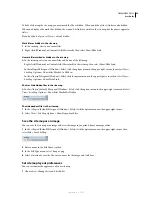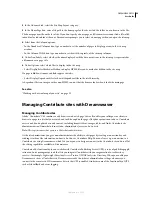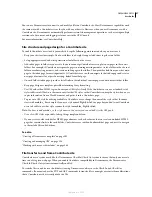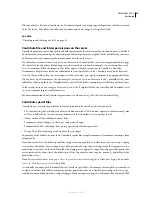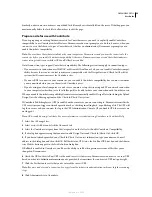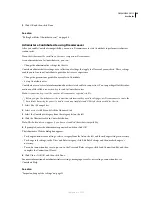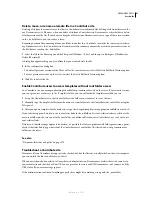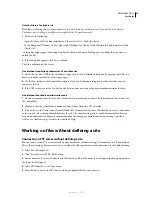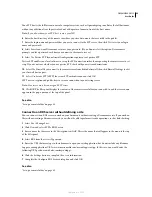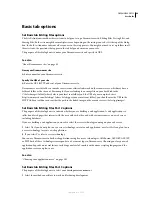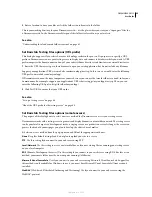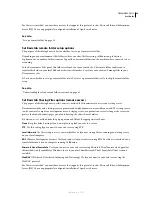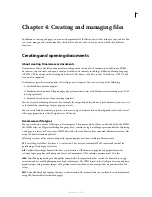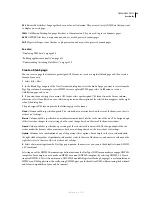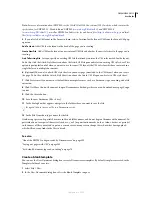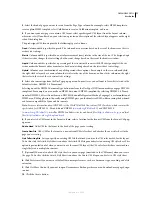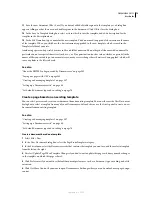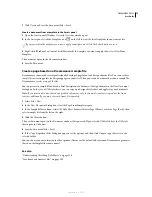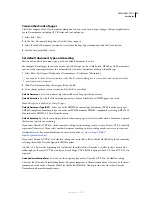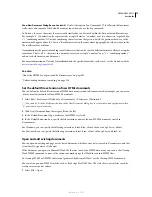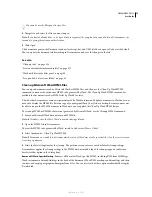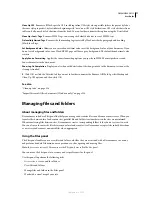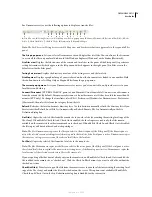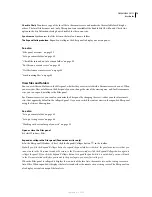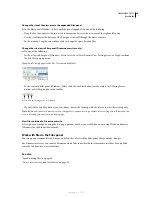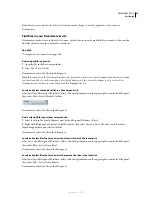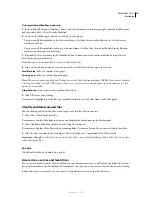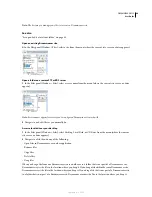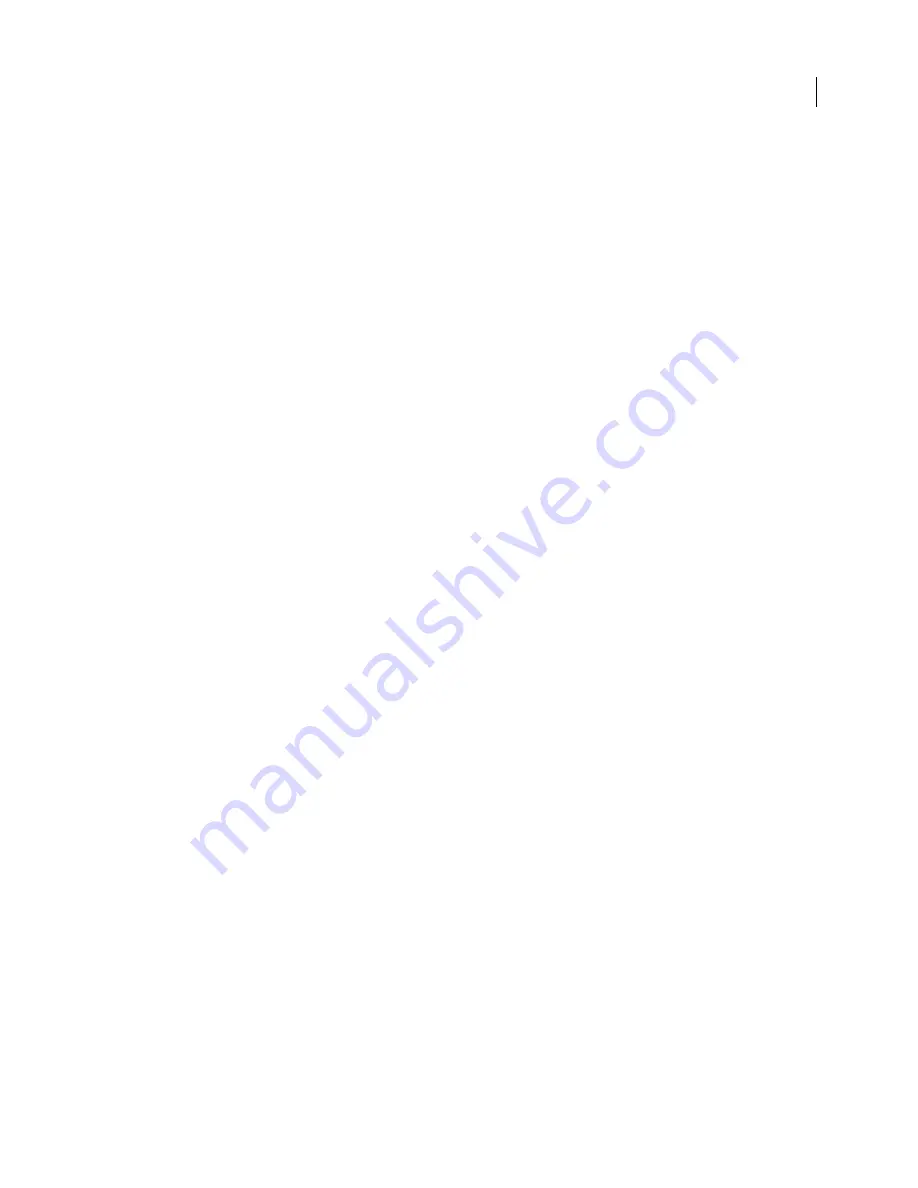
DREAMWEAVER CS3
User Guide
69
XSL
Extensible Stylesheet Language files have a .xsl or .xslt extension. They are used to style XML data that you want
to display on a web page.
CFML
ColdFusion Markup Language files have a .cfm extension. They are used to process dynamic pages.
ASPX
ASP.NET files have a .aspx extension and are used to process dynamic pages.
PHP
Hypertext Preprocessor files have a .php extension and are used to process dynamic pages.
See also
“Displaying XML data” on page 420
“Building applications visually” on page 614
“Understanding Cascading Style Sheets” on page 120
Create a blank page
You can create a page that contains a predesigned CSS layout, or create a completely blank page and then create a
layout of your own.
1
Select File > New.
2
In the Blank Page category of the New Document dialog box, select the kind of page you want to create from the
Page Type column. For example, select HTML to create a plain HTML page, select ColdFusion to create a
ColdFusion page, and so on.
3
If you want your new page to contain a CSS layout, select a predesigned CSS layout from the Layout column;
otherwise, select None. Based on your selection, a preview and description of the selected layout appears on the right
side of the dialog box.
The predesigned CSS layouts provide the following types of columns:
Fixed
Column width is specified in pixels. The column does not resize based on the size of the browser or the site
visitor’s text settings.
Elastic
Column width is specified in a unit of measurement (ems) relative to the size of the text. The design adapts
if the site visitor changes the text settings, but does not change based on the size of the browser window.
Liquid
Column width is specified as a percentage of the site visitor’s browser width. The design adapts if the site
visitor makes the browser wider or narrower, but does not change based on the site visitor’s text settings.
Hybrid
Columns are a combination of any of the previous three options. For example, in the two-column hybrid,
the right sidebar layout has a liquid main column that scales to the size of the browser, and an elastic column on the
right that scales to the size of the site visitor’s text settings.
4
Select a document type from the DocType pop-up menu. In most cases, you can use the default selection, XHTML
1.0 Transitional.
Selecting one of the XHTML document type definitions from the DocType (DTD) menu makes your page XHTML-
compliant. For example, you can make an HTML document XHTML-compliant by selecting XHTML 1.0 Transi-
tional or XHTML 1.0 Strict from the menu. XHTML (Extensible Hypertext Markup Language) is a reformulation of
HTML as an XML application. Generally, using XHTML gives you the benefits of XML, while ensuring the backward
and future compatibility of your web documents.
September 4, 2007

